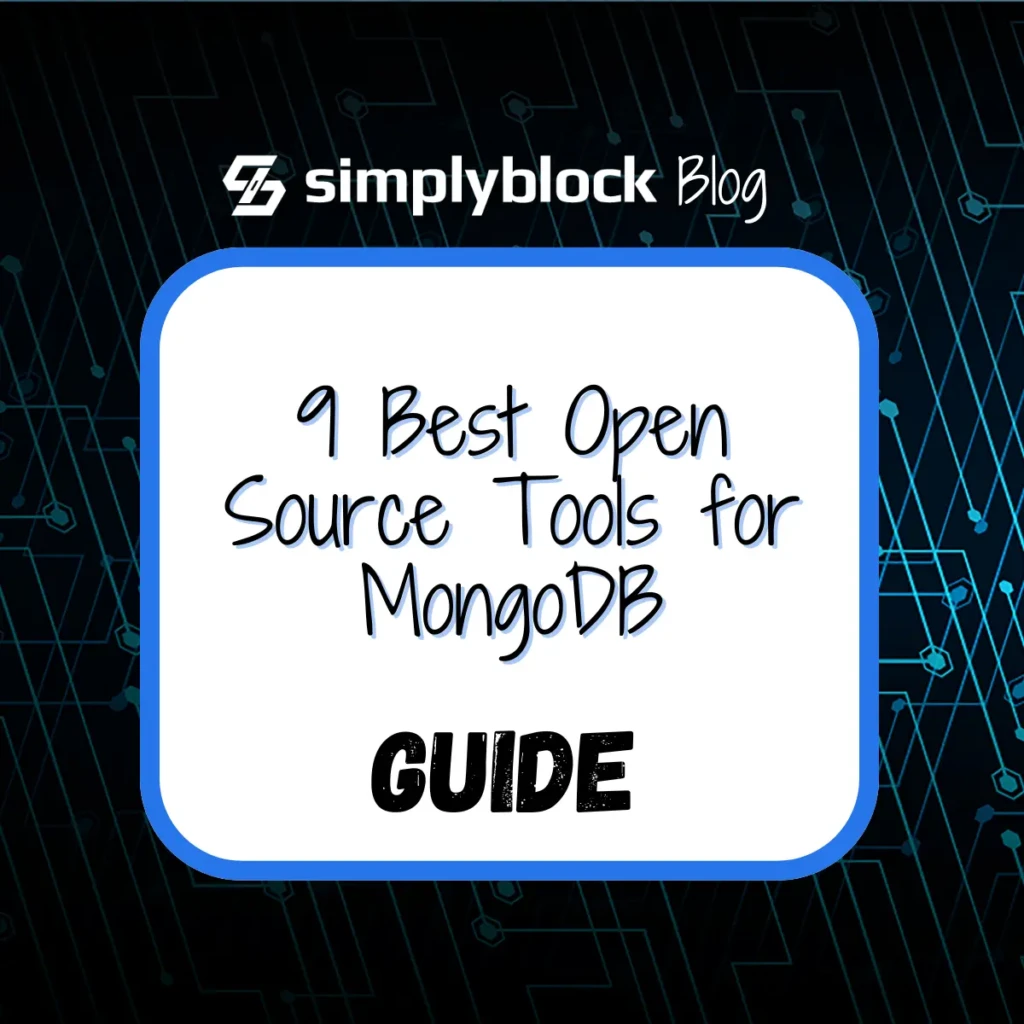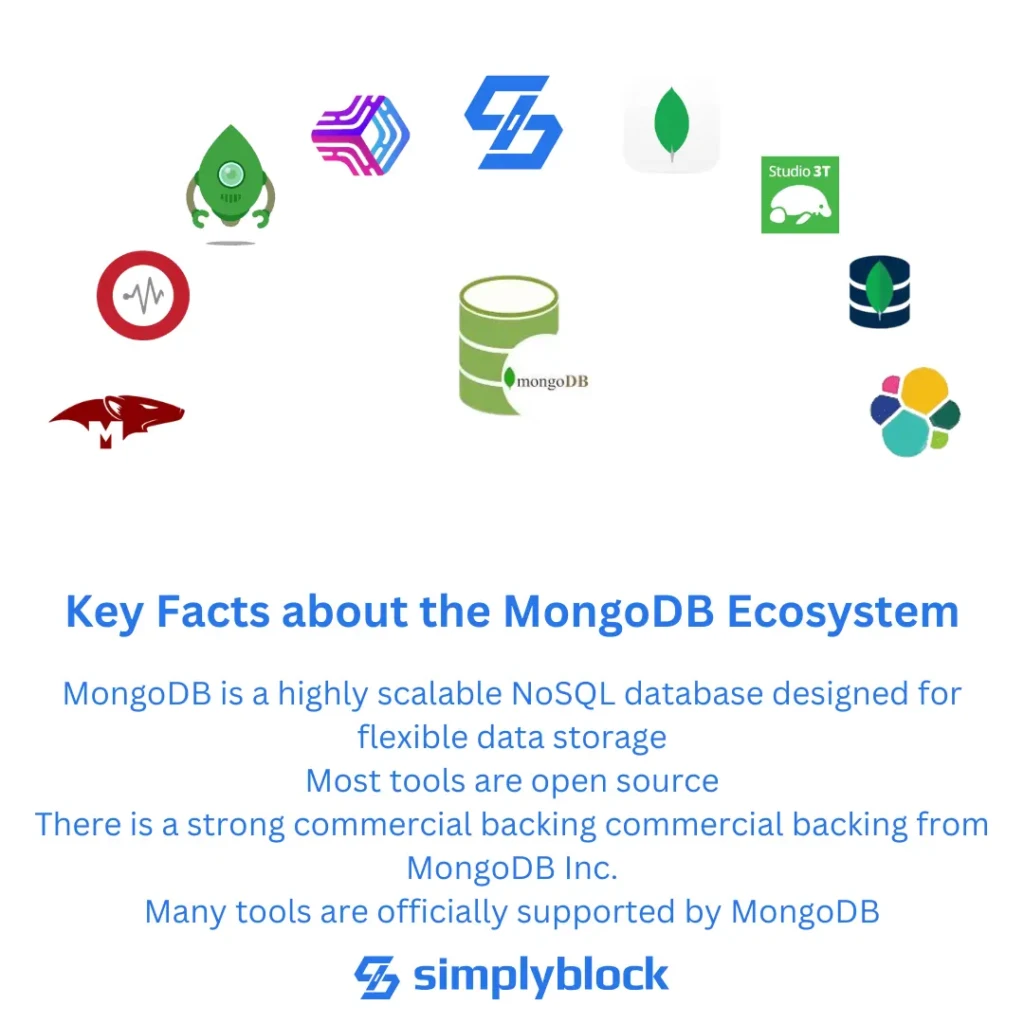
What are the best open-source tools for your MongoDB setup?
MongoDB is a leading NoSQL database that provides high performance, high availability, and easy scalability. As the database of choice for many modern applications, the MongoDB ecosystem has grown significantly, with a wealth of open-source tools available to enhance its capabilities.
These tools are designed to help developers and database administrators manage, monitor, and optimize MongoDB deployments effectively. As MongoDB continues to gain popularity, the demand for robust and reliable open-source tools has also increased.
In this post, we will explore nine essential open-source tools that can help you optimize your MongoDB environment.
1. Robo 3T
Robo 3T, formerly known as Robomongo, is a popular open-source GUI for MongoDB. It provides a user-friendly interface for interacting with your MongoDB databases, making it easier to visualize, query, and manage data. Robo 3T’s intuitive design and real-time shell give developers a powerful tool for database administration and development.
2. MongoDB Compass
MongoDB Compass is the official GUI for MongoDB, offering advanced features for schema visualization, performance monitoring, and query optimization. With Compass, you can explore your data visually, perform ad-hoc queries, and analyze the performance of your database operations, making it an indispensable tool for MongoDB users.
3. Mongostat
Mongostat is a command-line tool that provides real-time statistics about your MongoDB instance. It displays crucial metrics such as the number of operations per second, memory usage, and database locks. Mongostat is essential for monitoring the health and performance of your MongoDB deployments, helping you identify and troubleshoot issues quickly.
Seeing spikes in ops/sec? Simplyblock helps eliminate hidden storage bottlenecks that often slow down high-throughput MongoDB workloads.
4. Mongodump/Mongorestore
Mongodump and Mongorestore are utility tools provided by MongoDB for creating backups and restoring data. Mongodump creates a binary export of your data, which can be restored using Mongorestore. These tools are crucial for ensuring data safety and performing disaster recovery tasks in MongoDB environments.
Backups are only useful if they’re fast and reliable. Simplyblock adds consistent snapshots and real-time S3 replication for disaster resilience.
5. Mongoose
Mongoose is an open-source Node.js library that provides a straightforward, schema-based solution to model your MongoDB data. It is widely used for building data-driven applications in Node.js, offering features such as schema validation, middleware, and query building, making it easier to interact with MongoDB from a JavaScript environment.
6. PM2
PM2 is a process manager for Node.js applications that integrates well with MongoDB. It helps you manage and monitor your Node.js applications running with MongoDB, providing features like log management, clustering, and automatic restarts. PM2 is an essential tool for deploying MongoDB-backed applications in production environments.
Node.js apps using MongoDB often fail silently on I/O slowdowns. Simplyblock helps apps stay stable during spikes or restarts.
7. Studio 3T
Studio 3T is a powerful GUI and IDE for MongoDB, designed for both developers and data professionals. It offers features like visual query building, data migration, and JSON editing, all within a single interface. While not entirely open-source, Studio 3T offers a free version with a comprehensive set of tools that greatly enhances MongoDB management.
8. Graylog
Graylog is an open-source log management tool that can integrate with MongoDB to store and analyze log data. It provides a centralized interface for monitoring and searching through logs, making it easier to troubleshoot issues across your MongoDB deployments. Graylog’s powerful querying and alerting capabilities make it an essential tool for maintaining the health of your MongoDB environment.
MongoDB logs grow fast. Simplyblock offloads cold logs to S3 while keeping active ones fast and local.
9. Elastic Stack (ELK)
The Elastic Stack, commonly known as ELK (Elasticsearch, Logstash, Kibana), is an open-source suite of tools that can be used for logging and monitoring MongoDB. Logstash collects and processes logs from MongoDB, Elasticsearch stores them, and Kibana provides visualization. This stack is widely used for monitoring and gaining insights into MongoDB performance and usage.
Ingesting logs into MongoDB? Simplyblock improves write throughput and reduces retention costs with smart storage tiering.

Why Choose simplyblock for MongoDB?
While MongoDB excels at document storage and scalability, optimizing storage costs and ensuring robust data protection across sharded clusters is crucial. This is where simplyblock’s intelligent storage optimization creates unique value:
Optimized MongoDB Storage:
Simplyblock enhances MongoDB’s storage efficiency through intelligent volume management. By leveraging thin provisioning and automatic tiering, simplyblock ensures optimal storage utilization for MongoDB’s WiredTiger storage engine.
Less frequently accessed collections and indexes are automatically moved to cost-effective S3 storage, while maintaining ultra-low latency access through local NVMe caching. This approach is particularly valuable for time-series collections or historical data where storage costs can quickly escalate.
MongoDB Cluster Management:
Simplyblock streamlines storage management for sharded MongoDB clusters through its unified storage pool approach. Instead of managing individual EBS volumes for each shard, simplyblock provides a consolidated storage layer that can be dynamically allocated across the cluster. Its multi-attach capabilities enable seamless replica set operations, while the NVMe over TCP protocol ensures high-performance data access.
This architecture significantly reduces the operational complexity of managing storage across large MongoDB deployments.
Enterprise-Grade Data Protection:
Simplyblock enhances MongoDB’s resilience through its sophisticated backup and disaster recovery features. The platform’s ability to create consistent snapshots across multiple volumes ensures that backups maintain referential integrity across sharded collections and config servers.
By leveraging write-ahead logging to S3, simplyblock provides near-zero RPO disaster recovery capabilities without impacting MongoDB’s performance. This is especially crucial for organizations running MongoDB alongside other databases, as simplyblock maintains consistency across the entire data ecosystem during backup and recovery operations.
How to Optimize MongoDB Storage with Open-source Tools
This guide explored nine essential open-source tools for MongoDB, from Robo 3T’s visualization capabilities to the ELK stack’s monitoring features. While these tools excel at different aspects – Mongoose for schema management, PM2 for process control, and Studio 3T for querying – proper implementation is crucial. Tools like Mongostat provide performance insights, while Mongodump and Mongorestore handle basic backup operations. Each tool offers unique approaches to managing and optimizing MongoDB deployments.
If you’re looking to further streamline your MongoDB operations, simplyblock offers comprehensive solutions that integrate seamlessly with these tools, helping you get the most out of your MongoDB environment.
Ready to take your MongoDB management to the next level? Contact simplyblock today to learn how we can help you simplify and enhance your MongoDB journey.
Questions and Answers
Top tools include MongoDB Community Server, MongoDB Exporter for Prometheus, Kubernetes Operators, and Helm charts. Combine them with Simplyblock’s storage for MongoDB to ensure reliable performance, replication, and dynamic provisioning.
Yes, MongoDB can run in production on Kubernetes with the help of StatefulSets, the MongoDB Kubernetes Operator, and CSI-compatible storage. Simplyblock’s NVMe-over-TCP storage ensures fast, persistent volumes for your database workloads.
MongoDB benefits from low-latency, high-throughput block storage. NVMe-over-TCP provides near-local SSD performance over standard networks, which Simplyblock delivers natively with Kubernetes integration and volume-level encryption.
Use the MongoDB Exporter with Prometheus and Grafana for detailed metrics and dashboards. Combine this with disk usage monitoring if running in AWS to avoid overprovisioning and manage costs.
Simplyblock delivers dynamic, CSI-provisioned NVMe storage with built-in encryption at rest, replication, and snapshots. It helps run MongoDB securely and efficiently across cloud-native and hybrid environments.

